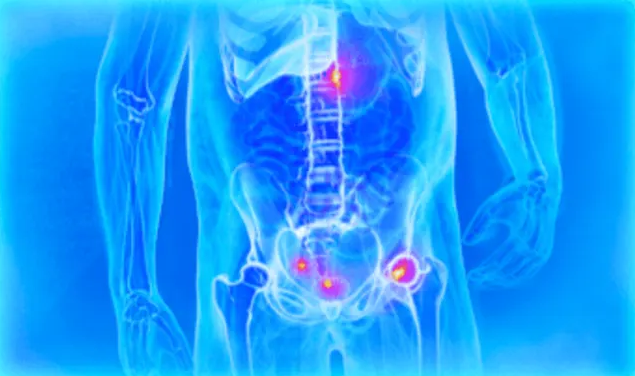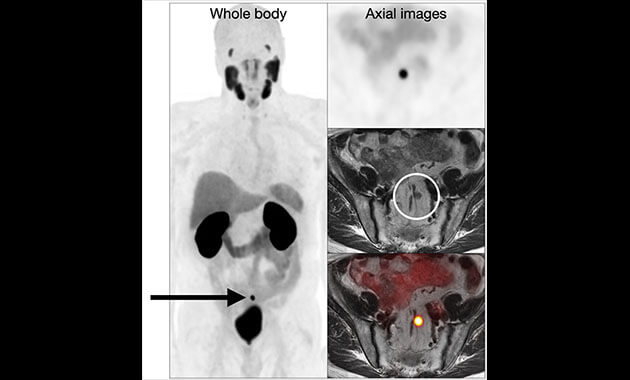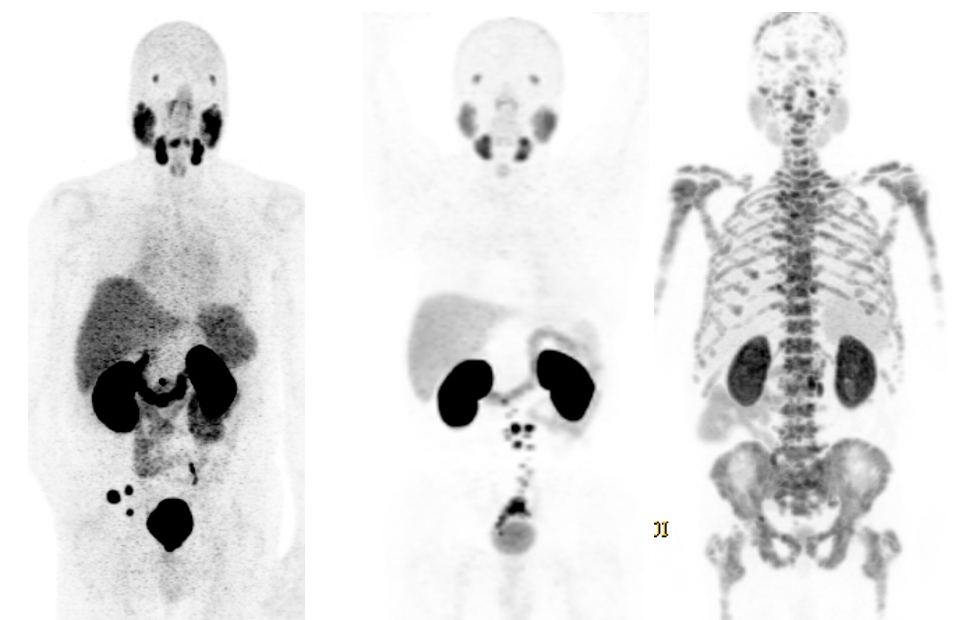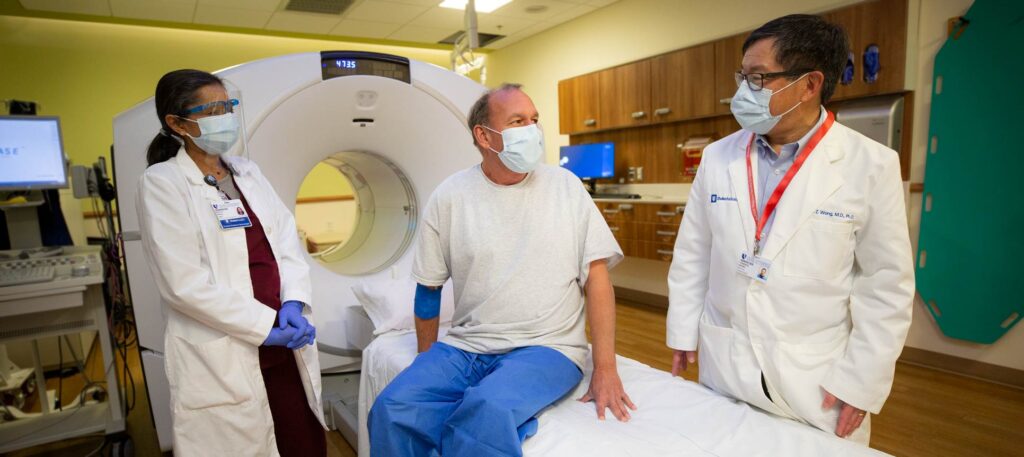When doctors suspect prostate cancer or need to monitor how well your treatment is working, they might recommend a specialized imaging test called a PET scan.

This powerful diagnostic tool has revolutionized how we detect and track prostate cancer, offering insights that traditional scans simply cannot provide. Understanding what a PET scan for prostate cancer is, how it works, and what to expect can help ease your concerns and prepare you for the experience ahead.
PET Scans for Prostate Cancer
Prostate cancer affects millions of men worldwide, and early detection remains crucial for successful treatment outcomes. While blood tests like PSA (prostate-specific antigen) and physical examinations provide important clues, sometimes doctors need a more detailed look at what’s happening inside your body. This is where PET scans become invaluable, acting like a sophisticated detective that can spot cancer cells hiding in places other tests might miss.
- Basic Technology: A PET scan (Positron Emission Tomography) represents a remarkable fusion of nuclear medicine and advanced imaging technology that creates a metabolic map of your body
- Functional vs. Structural Imaging: Unlike traditional scans that show what structures look like, PET scans reveal how actively tissues are functioning at the cellular level
- Cancer Cell Detection Principle: The scan works because cancer cells are metabolically hyperactive, consuming nutrients (particularly glucose) at much higher rates than normal healthy cells
- Exploiting Cancer’s Weakness: This increased appetite for fuel becomes cancer cells’ weakness, making them visible to PET scanners in ways other imaging methods cannot achieve
- Specialized Tracers for Prostate Cancer: Doctors use radioactive tracers that target different aspects of cancer cell behavior, with PSMA PET (Prostate-Specific Membrane Antigen) being the most common
- PSMA Targeting: This tracer has an almost magnetic attraction to prostate cancer cells, binding to proteins that these cells produce in abundance
- Cellular Activity Window: The scan provides a window into your body’s cellular activity, with the radioactive tracer acting like a beacon that lights up areas where cancer cells are present and active
- Comprehensive Information: Allows doctors to see not just where tumors might be located, but also how aggressively they’re behaving and whether they’ve spread to other parts of your body
How PET Scans Detect Prostate Cancer?
Pre-Scan Preparation: The detection process begins long before you lie down on the scanning table, starting with the creation of the radioactive tracer in specialized facilities
Tracer Production Timing: The tracer must be used within hours of creation due to its short radioactive half-life, requiring precise scheduling
Circulation and Targeting: Once injected into your bloodstream, the tracer circulates throughout your body, seeking out its target cells with specific binding properties
PSMA Protein Binding: For PSMA PET scans, the tracer specifically looks for prostate cancer cells by binding to the PSMA protein that these cells display on their surface like a cellular identification badge
Contrast Creation: Normal prostate tissue also has some PSMA, but cancer cells typically have much higher concentrations, making them light up brighter on the scan

Critical Waiting Period: The 60-90 minute waiting period after injection is crucial for image quality, allowing tracer accumulation in target tissues while clearing from bloodstream and normal organs
Internal Development Process: Your body is essentially developing the pictures from the inside out during this waiting period, creating the contrast needed for clear imaging
Scanning Mechanics: You lie on a table that slowly moves through a large, doughnut-shaped machine that detects radiation emitted by the tracer
Image Creation: Sophisticated computer algorithms create detailed images that are maps of metabolic activity showing where cancer cells are actively growing and spreading
Superior Sensitivity: The scanner can detect cancer deposits as small as a few millimeters, often finding disease that other imaging methods miss entirely
Clinical Impact: This sensitivity is particularly valuable for prostate cancer, revealing hidden metastases in lymph nodes or bones before symptoms appear, completely changing treatment approaches and prognoses
Essential Considerations Before Your PET Scan
- Dietary Preparation Importance: Your diet in the days leading up to the scan significantly impacts image quality and accuracy of results
- Carbohydrate Restrictions: It’s good to have a low-carbohydrate diet for 24 hours before your scan because many PET tracers are based on glucose metabolism
- Fasting Requirements: Complete fasting for several hours immediately before the scan ensures normal cells aren’t competing with cancer cells for the tracer
- Blood Sugar Management: Blood sugar levels require special attention, particularly for diabetic patients, as elevated glucose can interfere with tracer uptake and image quality
- Diabetic Considerations: Diabetic patients receive specific instructions about medication timing and blood sugar monitoring, with us checking levels on arrival
- Medication Review: Certain medications can affect tracer distribution or interfere with image interpretation, including blood pressure medications, heart medications, and over-the-counter supplements
- Complete Medication Disclosure: Always provide your healthcare team with a complete list of everything you’re taking, including vitamins, herbs, and supplements
- Exercise Restrictions: Strenuous exercise in the 24 hours before your scan can affect tracer distribution, potentially creating false signals mistaken for cancer activity
- Activity Limitations: Plan to avoid intense workouts or physically demanding activities the day before your scan
- Stress Management: High stress or anxiety can affect tracer uptake and distribution throughout your body, so arriving relaxed is important
- Comfort Measures: We offer heated blankets, music, or relaxation techniques to help you stay calm during the procedure

Costs and Financial Considerations
- Technology Investment Costs: PET scans represent sophisticated technology with significant operational costs due to expensive equipment and specialized staff requirements
- Fresh Tracer Production: Radioactive tracers must be produced fresh for each patient using expensive cyclotrons, contributing to higher costs
- Equipment and Staffing: The scanners cost millions of dollars, and specialized nuclear medicine staff command premium salaries
- Insurance Coverage Variability: Coverage varies significantly depending on your specific policy and the clinical indication for the scan
- Medical Necessity Requirements: Most insurance plans cover PET scans when deemed medically necessary for cancer diagnosis, staging, or treatment monitoring
- Prior Authorization: Some insurers may require prior authorization or second opinions before approving coverage, with varying definitions of “medically necessary.”
- Direct Communication Benefits: For patients in Lucknow, direct communication with us can often lead to cost negotiations and payment plan options
- Financial Understanding: PET Scan Lucknow understands the financial burden of a cancer diagnosis and is willing to work with patients to make scans more affordable
- Payment Options: Cash discounts for out-of-pocket patients can reduce costs by 20-30% or more, with payment plans allowing cost spreading over several months
- Healthcare Financing: We participate in healthcare financing programs offering low or no-interest payment options
- Package Deals: Don’t hesitate to ask us about reduced rates for multiple scans if you require follow-up imaging for treatment monitoring
What Every Prostate Cancer Patient Should Know?
- Integrated Care Tool: PET scanning represents just one tool in your medical team’s diagnostic arsenal within your overall care plan
- Timing Considerations: Recent prostate biopsies may require waiting several weeks before PET scanning, as biopsy inflammation can create false signals
- Treatment Timing Effects: If you’ve started hormone therapy or other treatments, scan timing relative to treatment initiation can affect image interpretation
- PSA-PET Relationship Complexity: The relationship between PSA levels and PET scan findings isn’t always straightforward and can surprise patients
- Contradictory Results Explanation: You might have rising PSA with negative PET scan, or normal PSA with positive PET findings, because PSA measures protein production while PET measures metabolic activity
- Individualized Follow-up: Follow-up imaging schedules vary greatly depending on your specific situation, treatment approach, and scan results
- Surveillance Planning: Some patients need repeat scans every few months for treatment monitoring, while others require only annual or biannual imaging
- Personalized Approach: Your oncologist develops a personalized surveillance plan based on risk factors, treatment response, and overall health status
- Psychological Impact Recognition: The psychological impact of undergoing repeated imaging can be significant, with anxiety and worry being normal and valid feelings
- Support Resources: Consider connecting with support groups, counselors, or other patients who understand the challenges of cancer diagnosis uncertainty
- Communication Importance: Don’t hesitate to ask questions about why PET scans are recommended, what results mean, and how they’ll influence your treatment plan
- Patient Partnership: Understanding medical recommendation rationales helps you feel more in control and makes you a better partner in your own care

Preparing for Your Scan Day Experience
- Time Planning: Plan to spend approximately three to four hours at the imaging facility, though actual scanning time is only a portion of this total
- Extended Timeline Components: The timeframe accounts for paperwork, tracer injection, waiting period for tracer distribution, scanning itself, and brief observation period afterward
- Arrival Procedures: Begin with registration and insurance information verification, bringing all relevant insurance cards, identification, and any prior imaging studies requested
- Early Arrival Benefits: Prefer slightly early arrival to complete paperwork without feeling rushed
- Injection Process: Takes only a few minutes but requires precise timing and technique, with nuclear medicine technologist establishing intravenous access
- Injection Experience: The injection feels no different from any other intravenous medication, with no immediate sensations from radioactive material
- Quiet Rest Period: During the 60-90 minute waiting period after injection, you’ll rest quietly in a comfortable room to optimize tracer distribution
- Activity Restrictions: Physical activity during waiting time can affect tracer distribution and potentially compromise image quality
- Comfort Provisions: We also provide reclining chairs, blankets, and entertainment options to help you relax during this crucial period
- Scanning Procedure: Requires lying still on a padded table for approximately 20-30 minutes while the table moves slowly through the scanner
- Scanner Environment: The machine makes some noise during operation but is generally quieter than MRI scanners
- Communication Access: Communication with our technologist remains possible throughout the scan via intercom system
Frequently Asked Questions
How accurate are PET scans for detecting prostate cancer recurrence?
PET scans, particularly PSMA PET scans, demonstrate remarkable accuracy for detecting prostate cancer recurrence, with sensitivity rates often exceeding 90% when PSA levels are elevated. However, accuracy can vary depending on PSA levels, with better detection rates when PSA is higher. For very low PSA levels (below 0.5), even the most sensitive PET scans might miss small areas of recurrent disease. Your doctor will consider your PSA trend, treatment history, and other factors when interpreting results.
Can I continue taking my regular medications before the scan?
Most medications can be continued as prescribed, but some may require timing adjustments. Blood pressure medications, heart medications, and diabetes treatments might need special consideration. Hormone therapy for prostate cancer typically doesn’t need to be stopped, but inform your medical team about all treatments you’re receiving. Always provide a complete medication list, including over-the-counter drugs and supplements, when scheduling your scan.
Will I be radioactive after the scan, and is it safe to be around family?
The radioactive tracer used in PET scans has a very short half-life, meaning its radioactivity decreases rapidly over time. While you will have trace amounts of radioactivity in your body for 12-24 hours after the scan, the levels are extremely low and pose no significant risk to family members through normal contact. However, you might be advised to avoid prolonged close contact with pregnant women and small children for the remainder of the day as a precautionary measure.
How long does it take to get results from my PET scan?
Results typically become available within 24-48 hours after your scan, though this timeline can vary depending on the facility and complexity of interpretation required. Our specialized nuclear medicine physician or radiologist will analyze your images and prepare a detailed report for your referring doctor. Your oncologist or urologist will then review these results in the context of your overall clinical picture before discussing findings with you.
What happens if my PET scan shows areas of concern?
If your PET scan reveals areas suspicious for cancer, your medical team will develop an appropriate follow-up plan based on the location, size, and characteristics of these findings. This might involve additional imaging studies, tissue biopsies, changes in treatment approach, or enhanced monitoring schedules. Remember that PET scans sometimes show areas of increased activity that aren’t cancer-related, so additional testing may be needed to confirm findings.
Can I eat normally after my PET scan?
Yes, you can resume your normal diet immediately after your PET scan is complete. In fact, eating and drinking normally helps your body eliminate the radioactive tracer more quickly. We encourage patients to drink extra fluids after the scan to help flush the tracer from their system, though this isn’t strictly necessary for safety reasons.

Is there any difference between different types of PET scans for prostate cancer?
Yes, there are several different types of PET tracers used for prostate cancer imaging, with PSMA PET being the most common and effective for most situations. Older tracers like FDG (fluorodeoxyglucose) are less specific for prostate cancer and generally not recommended. Newer tracers continue to be developed and studied, potentially offering even better accuracy and specificity for prostate cancer detection.
How often will I need repeat PET scans?
The frequency of repeat PET scans varies greatly depending on your individual situation, treatment response, and risk factors. Some patients might need scans every three to six months during active treatment, while others might only require annual surveillance imaging. Your oncologist will develop a personalized monitoring schedule based on your PSA trends, treatment approach, and overall prognosis.
Remember that this sophisticated imaging technology represents just one tool in your medical team’s approach to providing you with the best possible care and outcomes.
